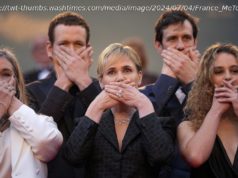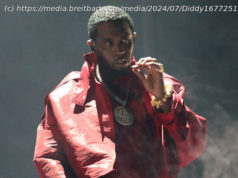The author of the infamous tell-all Hollywood Babylon never made a full-length feature film, but his work was incredibly influential on filmmakers who got.
Kenneth Anger was a beautiful boy. He would probably have been the first to tell you so. You can see it in Fireworks, his first short film of note, made in 1947, when he was just 20 years old. In that picture he plays a “dreamer” whose visions include that of ravishment by sailors, one of whom has a lit roman candle coming out of the fly of his trousers. Anger, born Kenneth Wilbur Anglemyer in 1927, frequently claimed that when he was but a wee lad, and even more gorgeous than he was as a 20-year-old, he played the Changeling Prince in Max Reinhardt’s 1935 film of A Midsummer Night’s Dream, starring James Cagney, Olivia De Havilland, Mickey Rooney and scores of other major stars. According to official record, he did no such thing. But the story was, among other things, a way for Anger to place himself in the Hollywood firmament that he would make often gorgeous war on via art and prose.
Fireworks was literally a home movie — he made it in his parent’s house, on weekends while they were away. You can see the influence of Cocteau’s The Blood of a Poet in it, but Anger went further in exploring homosexual dread and desire than Cocteau, and as far as American moviemaking was concerned, he went far enough to go beyond the pale. The exhibition history of the movie is marked by numerous citations for obscenity, despite its containing nothing that you could today call explicit content. Which is not to say that its shot of stream of milk hitting a man’s shoulder and flowing down over his nipple lacks for hotness — it does not.
This landmark of queer cinema inspired the poet Robert Duncan, who became friends with Anger and dedicated sections of his poem “The Torso,” whose imagery is akin to that of Fireworks, to Anger.
While Anger’s family was only middle-class, he was able to move to Europe shortly after making Fireworks and hooked up with filmmaking friends who’d gone into exile after hounding by HUAC. His fanciful Rabbit’s Moon was shot in a studio on the sly; when he was discovered, he was ejected. He returned to the U.S. after his mother died, and, reflecting his increasing interest in the occult, he made Inauguration of the Pleasure Dome, a luridly colored enactment of trippy, feathery ritual, starring some of the cream of what was then Los Angeles’ bohemian underground: writer Anais Nin, poet and Aleister Crowley follower Marjorie Cameron, future director Curtis Harrington.
The young Anger was socially talented: he befriended the sex researcher Alfred Kinsey, who was fascinated by Fireworks, and they travelled to Italy to make a film together, about Thelema, the former abbey where the occultist Crowley decamped at one time. The adventure left him broke, and for money, he and the film critic Elliott Stein (uncredited) wrote the first version of Hollywood Babylon, a collection of scurrilous and largely unsupported tales of Tinseltown decadence.
The book first appeared in France, as no American publisher would touch it; it was bootlegged in the States in 1965. It quickly became a collector’s item, but by this time Anger had stirred up censorious America with another movie, Scorpio Rising. This short was drawn from footage Anger shot of biker gangs in Brooklyn and the Bronx in the early ‘60s. Tight jeans, black leather jackets, wild parties with guys (always guys) urinating in motorcycle helmets, scored to the top twenty hits of the era. (For a long stretch the movie couldn’t be properly distributed because Anger didn’t clear the music.
Start
United States
USA — Cinema Look Back At Anger: Underground Movie Magician Kenneth Anger Did Not Live...






